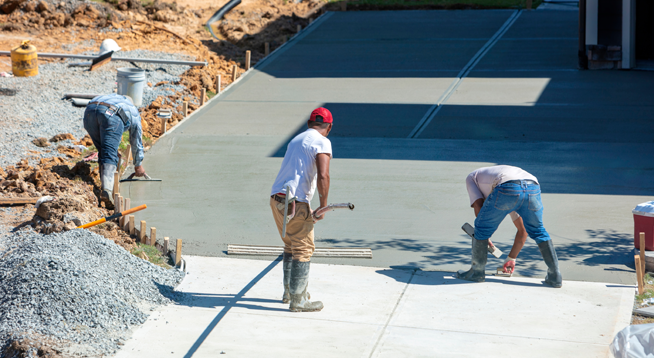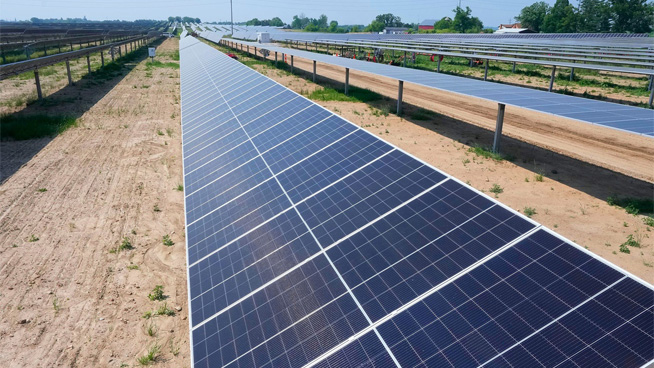
From The Detroit News | By Ken Calverley and Chuck Breidenstein
DETROIT, December 15, 2022 ~ We frequently get questions regarding cold weather concrete placements.
Can concrete be poured/placed in cold weather? What are the protections required to assure a good placement? Should I seal the fresh concrete? Can I use de-icers on the concrete?
As we have discussed in previous articles, concrete is the most widely used construction product in the world.
It is a highly sophisticated product backed by a lot of research and testing. Groups like the American Concrete Institute (ACI), the Global Cement and Concrete Association (GCCA), and others provide education, training and certification to cement and concrete producers and installers.
PODCASTS:
The Inside Outside Guys ~ December 18, 2022
(CONTINUED) In tandem with recognized codes, these groups advocate for the proper proportioning, production, placement and protection of concrete whether to support a bridge, a super-tall building or the car on your driveway.
Cold weather placements are acceptable under the right conditions and may even allow for a higher quality product since cooler cures produce higher strength concrete. Concrete placed in hotter temperatures requires more water, a higher slump and is generally more susceptible to cracking.
Slump is a measure of how far a given volume of concrete will fall when released from a cylinder and is indicative of the water to cement ratio in the mix, the more water the greater the potential for shrinkage and a weaker mix.
What is cold weather? The industry defines it as three successive days with the average temperature below 40 degrees and stays below 50 degrees for more than half of any 24-hour period.
The code and ACI standards tell us we cannot place concrete on frozen ground. Nor can we place it on top of water. It must be protected from freezing for a minimum of 72 hours.
Concrete is an exothermic product, meaning that it generates heat as it cures. Generally, the higher the cement content in a mix, the more heat it generates and the quicker it sets. A quicker set is important as plastic concrete, that is concrete that is still pliable due to water content, is more likely to freeze or have the water in it turn to ice crystals.
If that water freezes, even for a short period, we can have a severe potential strength loss in the mix; up to 50 percent or more. Additionally, such placements are likely to exhibit flaking, scaling and pock marks within the first year.
The cost of product we purchase from a redi-mix supplier is based largely on volume of cement content per cubic yard to obtain a specified ultimate compressive strength, UCS. For a typical driveway we would hope to achieve a UCS of 4,000 pounds-per-square-inch, PSI.
Cold weather rules for placement include adding more cement to the mix, placing the lowest slump practical, use of air entraining concrete, and use of admixtures that accelerate cure.
Air entraining concrete utilizes additives that create millions of microscopic air bubbles in the mix as it sets. This captured air gives the cured placement greater resistance to freeze-thaw cycles.
Other admixtures will minimize the need for high volumes of water to reduce slump and speed up the set.
It is common for cold weather placements to have up to 2% calcium chloride added to the mix to minimize freeze potential and accelerate set, but practitioners are cautioned that use of calcium chloride is not wise in steel reinforced concrete as the salt will corrode the steel.
Once a cold-weather drive has been placed and set, it should be protected by the use of insulated blankets or comparable materials to preserve the internal heat and expedite cure.
No deicers should be used on the new concrete for at least a year and the industry suggests the use of sealers on the concrete to further protect it from both water and chemical intrusion.
Concrete is routinely placed in cold weather conditions by professionals that know and understand the issues involved. Tenting a placement with tarps or heavy plastic and introducing a temporary heat source is common and acceptable practice.
Key for the homeowner is to understand basic concepts and to hire people that are expert at the work required.
Experts like those you’ll find at InsideOutsideGuys.com.
***
For housing advice and more, listen to “The Inside Outside Guys” every Saturday and Sunday on 760 WJR from 10 a.m. to noon, or contact them at InsideOutsideGuys.com.
WJR TOP STORIES:




